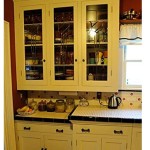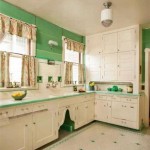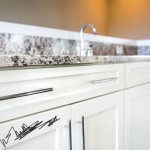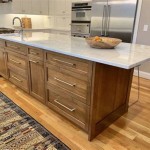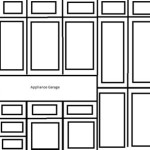Shelf Liners for Kitchen Cabinets: A Comprehensive Guide
Shelf liners are an often-overlooked but valuable addition to any kitchen. They provide a protective layer between stored items and the cabinet shelves, offering a variety of benefits that contribute to a cleaner, more organized, and longer-lasting kitchen environment.
Key Benefits of Using Shelf Liners
Shelf liners offer several advantages for kitchen cabinets:
- Protection against spills and stains.
- Cushioning for delicate items.
- Enhanced grip to prevent items from sliding.
- Easier cleaning and maintenance of cabinet shelves.
- Improved aesthetics by adding color or pattern.
- Reduced noise from items placed on shelves.
- Prolonged lifespan of cabinet shelves by preventing wear and tear.
Types of Shelf Liners
The market offers a wide array of shelf liner materials, each with its own set of properties and benefits. Choosing the right type depends on individual needs and preferences.
Common Shelf Liner Materials
Several materials are commonly used in the manufacturing of shelf liners:
- Rubber: Durable, waterproof, and provides excellent grip. Ideal for areas prone to spills.
- Vinyl: Easy to clean, water-resistant, and available in various colors and patterns. A versatile and cost-effective option.
- Cork: Natural, biodegradable, and provides cushioning. Suitable for storing delicate items like glassware.
- Foam: Cushioning and non-slip properties. Ideal for lining drawers and protecting fragile items.
- Paper: An economical option, suitable for light-duty use and frequent replacement.
- Non-adhesive: Easy to remove and reposition, offering flexibility for different cabinet configurations.
- Adhesive: Provides a secure grip and prevents shifting. Ideal for lining drawers and preventing items from sliding.
Choosing the Right Shelf Liner
Selecting the appropriate shelf liner involves considering several factors:
Factors to Consider
When choosing shelf liners for your kitchen cabinets, consider the following:
- Cabinet location: Consider the specific needs of the cabinet, such as under the sink, pantry, or spice rack.
- Items to be stored: Delicate items may require cushioned liners, while heavy items necessitate durable options.
- Desired level of grip: Non-slip liners are crucial for preventing items from shifting or sliding.
- Ease of cleaning: Select materials that are easy to wipe clean or wash.
- Aesthetic preferences: Choose colors and patterns that complement the kitchen décor.
Measuring and Installing Shelf Liners
Proper measurement and installation are essential for maximizing the effectiveness of shelf liners.
Steps for Installation
Follow these steps for proper installation:
- Measure shelves accurately: Use a measuring tape to determine the exact dimensions of each shelf.
- Cut the liner to size: Use scissors or a utility knife to cut the liner to the correct dimensions, leaving a small overhang if desired.
- Clean the shelves thoroughly: Ensure the shelves are clean and dry before applying the liner.
- Apply the liner smoothly: For adhesive liners, peel off the backing and carefully apply the liner to the shelf, smoothing out any air bubbles. For non-adhesive liners, simply place them flat on the shelf.
- Trim excess liner: If necessary, trim any excess liner using scissors or a utility knife.
Maintaining Shelf Liners
Regular cleaning and maintenance will ensure the longevity and effectiveness of shelf liners.
Cleaning Tips
Maintain your shelf liners with these cleaning tips:
- Regular wiping: Wipe down liners regularly with a damp cloth to remove crumbs and spills.
- Periodic washing: Some liners can be washed with soap and water for a more thorough cleaning.
- Replacement: Replace liners when they become worn or damaged to maintain hygiene and effectiveness.
Benefits of Replacing Old Liners
Replacing old or worn-out shelf liners offers several benefits:
- Improved hygiene: Old liners can harbor bacteria and grime.
- Enhanced appearance: New liners refresh the look of cabinets.
- Restored functionality: Replace liners that have lost their grip or cushioning properties.
By carefully considering the various types of shelf liners available and following proper installation and maintenance procedures, individuals can significantly improve the organization, cleanliness, and longevity of their kitchen cabinets.

Simple Diy Drawer And Shelf Liners

8 Pros And Cons Of Kitchen Cabinet Shelf Liners Everyday Old House

Simple Diy Drawer And Shelf Liners

Does Shelf Liner Really Extend The Life Of Cabinets Drawers

Give Your Kitchen A Colorful Makeover On The

Shelf Liners Kitchen Accessories That Escape Your Attention

How To Choose The Best Kitchen Shelf Liner 7 Tips Everyday Old House

8 Reasons You Should Use Shelf Liner In Your Kitchen Jam Organizing Wilmington Nc

4 Uses For Easyliner Brand Shelf Liner In The Kitchen Duck

The Best Shelf Liners Of 2024 Top Picks By Bob Vila
Related Posts

